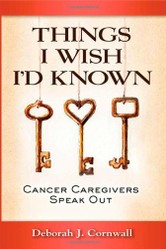One of the important tools that health care workers have used for this is face masks. They now exist in colorful designs. Controversy is also an issue as many people do not regularly use them. As a result, medical researchers observe that this serious infectious disease is currently in the United States. There are also non-medical masks which one can use in areas where crowds are common. Fabric masks are another name. Though some do not comply, people across the globe are well-aware of social distancing. The recommendation is that people keep a distance of at least six feet from others who are not part of the household. One meter is 1.0936 yards, or 39.37 inches. (Oxford, 2020; 1, 2, 3, 4, 5, 6).

Face Masks
The occurrence of coronavirus in 2019 has generated enormous attention across the globe.
Face Mask Concerns
The U.S. Centers for Disease Control suggests use of cloth face masks for the general public. Also, there is advantage to the use of surgical masks as they may filter large particles in the atmosphere (5).
It is not new that parents have long told children and other family members to clean their hands with an alcohol-based hand rub or soap and water. Contamination is obviously a serious matter in these situations. For example, clients must not use masks which are dirty or with damage. Many people do not know that the mask must cover nose, mouth, and chin. One must also remember that sharing of these devices is never acceptable. It is reasonable, however, for one person to use the same mask on more than one occasion. These times are beneficial when the person places it in a resealable, clean, and plastic bag and wash the mask each day with soap and water (1, 2, 3, 4, 5, 6).
Clinical Management of Coronavirus
Should someone acquire coronavirus or any other evidence of illness, the best approach is to visit a medical doctor. This is where aggressive laboratory data may become evident, and clinical management can take place (1, 2, 5). The client must also notify relatives and others with whom he or she has had contact. The process of quarantine varies across the globe; however, it is in use for 14 days in the United States and other geographic regions (1).
Still an important issue is the presence of multiple infectious diseases in one client. Such a situation complicates management of the patient. Though vaccine research has captured the attention of some of the most well-informed physicians since this all began, coronavirus remains a puzzle to doctors and those in the general community (1, 2, 3, 4, 5). Nevertheless, the challenge that it has brought across the world does not discourage many from the belief that there have been devastating infections for centuries. In other words, countries are strong enough to envision a day in the future when one of the most difficult ailments—will someday clear.
While this takes place, it remains a mystery over who will survive it, and who will not.
The protective tools which medical teams have used include N95 respirators and goggles. Some will benefit from isolation gowns, sterile gloves, and non-sterile gloves.
One must keep in mind that the U.S. Food and Drug Administration has not yet officially approved some of these devices (7).
As with many illnesses, there is the question whether heart disease becomes part of the picture. In other words, those who have coronavirus may also suffer from heart failure and coronary heart disease. Moreover, viral infection of the human heart can lead to injury of the heart muscle (3). Without question, patients must wear face covering consistently as it may hamper the spread of this illness. It is well-known that the use of cloth masks significantly interferes with droplets that emit from a person who talks, sneezes, or coughs (5).
Conclusion
Health care workers have been busy worldwide to solve this problem. Physicians receive medical literature each day with proposals to manage these situations. Clearly the solution requires that everyone work together. It must entail integration between scientists, news media, and many other disciplines to make an analysis which will move communities everywhere to seek change.
References
- World Health Organization. (WHO). (2020). How to wear a fabric mask.
- U.S. Centers for Disease Control. (2020). Coronavirus (COVID-19).
- Yancy, C. and Fonarow, G. (2020). Coronavirus disease 2019 (COVID-19) and the heart—Is heart failure the next chapter? Journal of the American Medical Association Cardiology.
- U.S. Centers for Disease Control. Hendrix, M., Walde, C., Findley, K., and Trotman, R. (2020). Absence of apparent transmission of SARS-CoV-2 from two stylists after exposure at a hair salon with a universal face covering policy—Springfield, Missouri, May 2020, 69, 930-932.
- Mayo Clinic. (2020). COVID-19: How much protection do face masks offer?
- University of Maryland. (2020). Wearing a Mask: Myths and Facts.
- U.S. Food and Drug Administration. (2020). Face Masks and Surgical Masks for COVID-19: Manufacturing, Purchasing, Importing, and Donating Masks During the Public Health Emergency.
- The photo of the stethoscope is reprinted with permission of the U. S. Centers for Disease Control.
- Copyright 2020. All rights reserved. Michael Koger, Sr., M.D.
Disclaimer
The information contained in this article is for educational purposes only, and one should not use it for diagnosis or treatment without permission of a health professional. Any reader who has concern about his or her health should contact their physician for advice.
You might also like
How to React to and Help a Loved One with CancerDealing with cancer? Learn how to react, treat and care for a loved one when ...
Do You Have Your Own Cure For Cancer?Is it possible you might be completely unaware of the cancer cure, a natural ...



 The Reality of Aspirinon 05/24/2021
The Reality of Aspirinon 05/24/2021
 An Old Microbeon 03/31/2021
An Old Microbeon 03/31/2021
 Coronavirus and Mental Illnesson 02/14/2021
Coronavirus and Mental Illnesson 02/14/2021
 Acute Ischemic Strokeon 12/25/2020
Acute Ischemic Strokeon 12/25/2020


Comments